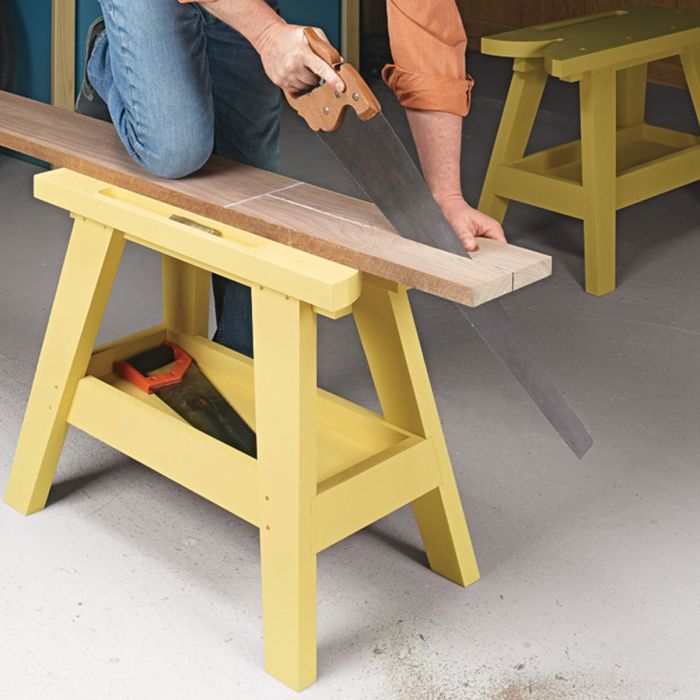Woodsmith Hardworking Sawbench Plan
Sawbenches have been used by craftsmen for centuries. These short work supports were originally intended to aid in using a handsaw. And while they’re fully capable of handling this task, this splayed-leg design makes the bench useful for several other tasks. With a wider top and shorter stance than a sawhorse, a sawbench is appropriately sized so that you can kneel on a board to provide clamping pressure. And the ripping notch on one end allows a workpiece to be fully supported during long rip cuts. Beyond these basic functions, a sawbench (or better yet, a pair of them) can also be used as a general assembly station or as finishing supports. A thick top with dog holes provides multiple clamping options. Best of all, you can knock out a pair of these benches during a pleasant weekend in the shop.
We offer the Woodsmith Hardworking Sawbench plan as a downloadable PDF or a printed format that we ship to you.
The no-nonsense usefulness of a sawbench in the shop can’t be overstated. Making a pair of them merely multiplies the benefits.
Step-by-step instructions, exploded views, materials list, and more—these plans have everything you need to build your own Hardworking Sawbench.
What you get (Downloadable PDFs):
Standard Plan:
- 8.5” x 11” PDF of 12 printable (digital) pages of step-by-step instructions
- 60 full-color photos and illustrations and exploded views
- Cutting diagram and materials list
- Technique for cutting compound miters
- Retail sources for project supplies
What you get (Printed & Shipped):
Standard Plan:
- 12 pages of step-by-step instructions
- 60 full-color photos and illustrations and exploded views
- Cutting diagram and materials list
- Technique for cutting compound miters
- Retail sources for project supplies
- 8.5” x 11” print shipped to you
| Country of Manufacture | United States |
|---|
WARNING: Wood Dust created by Drilling, sawing, sanding or machining wood products can expose you to wood dust, a substance known to the State of California to cause cancer. Avoid inhaling wood dust or use a dust mask or other safeguards for personal protection.

